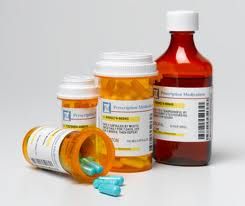Prescription medications play a crucial role in modern healthcare. They are prescribed by qualified healthcare professionals to treat various medical conditions and improve patients' well-being.
Types of Prescription Medications
Prescription medications can be classified into different categories based on their mode of action and the medical condition they are intended to treat. Some common types include:
1. Antibiotics
Antibiotics are used to treat bacterial infections by either killing bacteria or inhibiting their growth. They are prescribed for conditions such as respiratory tract infections, urinary tract infections, and skin infections.
2. Analgesics
Analgesics, also known as painkillers, are medications used to relieve pain. They can be further categorized into non-opioid (e.g., ibuprofen, acetaminophen) and opioid (e.g., codeine, oxycodone) analgesics. Opioids are more potent and are typically reserved for severe pain.
3. Antidepressants
Antidepressants are prescribed for individuals with depression or other mood disorders. They work by balancing certain chemicals in the brain, helping to alleviate symptoms of depression and improve overall mental well-being.
4. Antihypertensives
Antihypertensives are medications used to treat high blood pressure. They work by relaxing blood vessels, reducing the workload on the heart, and lowering blood pressure levels. This helps to prevent cardiovascular complications associated with hypertension.
The Prescription Process
Prescription medications cannot be obtained without a prescription from a qualified healthcare professional, such as a doctor or a pharmacist. This ensures that the medication is appropriate for the patient's condition and that the dosage is safe and effective. The prescription process typically involves several steps:
1. Diagnosis
The healthcare professional evaluates the patient's symptoms, medical history, and performs necessary tests or examinations to reach a diagnosis. Based on the diagnosis, they determine if a prescription medication is necessary and suitable for the patient.
2. Prescription Writing
If a prescription medication is deemed necessary, the healthcare professional writes a prescription detailing the medication name, dosage instructions, and duration of treatment. They may also provide additional instructions or precautions to ensure safe use of the medication.
3. Dispensing
The patient takes the prescription to a pharmacy, where a qualified pharmacist dispenses the medication. The pharmacist verifies the prescription, checks for any potential drug interactions or allergies, and provides counseling on how to take the medication correctly.
Safe Use of Prescription Medications
It is essential to use prescription medications safely and responsibly to maximize their benefits and minimize potential risks. Here are some important considerations:
1. Follow Dosage Instructions
Always follow the dosage instructions provided by the healthcare professional or the pharmacist. Taking too much or too little medication can lead to ineffective treatment or potential harm.
2. Be Aware of Potential Side Effects
Prescription medications can have side effects. Familiarize yourself with the potential side effects of the medication you are taking and report any new or worsening symptoms to your healthcare professional.
3. Avoid Drug Interactions
Some medications can interact with each other, leading to reduced effectiveness or increased risk of side effects. Inform your healthcare professional about all the medications, supplements, and herbal products you are taking to avoid such interactions.
4. Do Not Share Medications
Prescription medications are specifically prescribed for individual patients based on their unique medical conditions. Sharing medications with others is unsafe and can lead to unintended consequences.
The Role of Pharmacists
Pharmacists play a vital role in the prescription medication process. They are trained professionals who ensure the safe and appropriate use of medications. Some key responsibilities of pharmacists include:
1. Dispensing Medications
Pharmacists accurately dispense medications as prescribed by healthcare professionals. They ensure the right medication, dosage, and quantity are provided to patients.
2. Patient Counseling
Pharmacists counsel and educate patients on how to take their medications correctly, including dosage instructions, potential side effects, and any necessary precautions. This helps patients understand and adhere to their prescribed treatment plan.
3. Medication Management
Pharmacists can review a patient's complete medication profile, including prescription and over-the-counter medications, to identify potential drug interactions or duplications. This helps prevent adverse reactions and optimize medication therapy.
In Conclusion
Understanding prescription medications is essential for patients to responsibly manage their health conditions. By working closely with healthcare professionals and pharmacists, patients can ensure safe and effective use of prescribed medications, leading to improved health outcomes and overall well-being.


